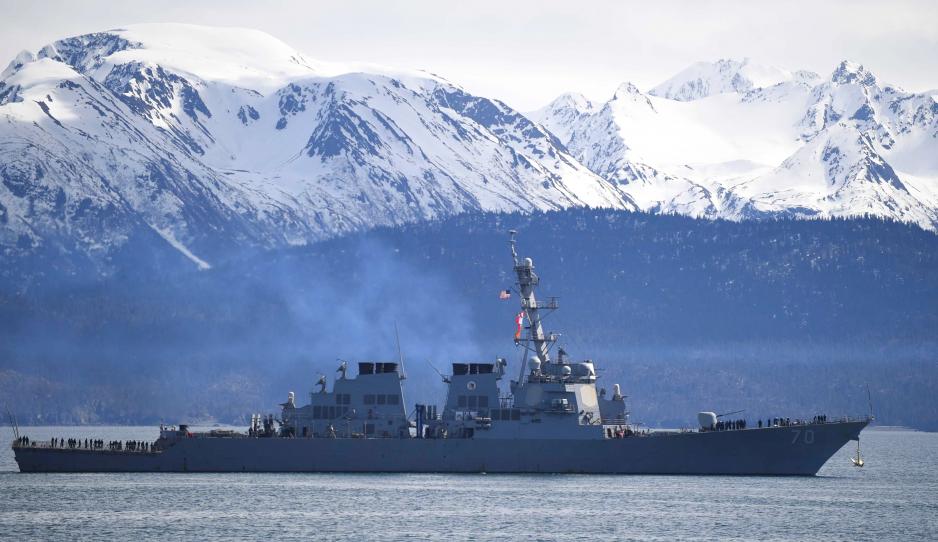Commentary From American Absence to Military Presence

KV Svalbard exercising with the French marine vessel Rohne, which has sailed the Northern Sea Route before.
Since Donald Trump assumed power, the USA has been completely absent from Arctic politics. That may be about to change nw. However, when the USA nows makes a move towards the north, that step is made with military forces. The country is still turning its back on dialogue.
The Northern Sea Route is gradually developing. Climate changes are about to tie Europe and Asia closer together along the coast of the Arctic. Large parts of the NSR follows Russia’s border towards the East. If the polar ice continues to melt, the NSR may come to play an increasingly important part in international trade.
The American response
Ice melting is not the only factor affecting this northern trade route. An equally if not more important argument is the image of a peaceful Arctic, which represents a contrast to conflicts along other and more traditional trade routes.
Shipping in the north will – and has already – increased Russian influence in the Arctic.
It was, in other words, just a matter of time before the American armed forces would respond to this development.
The answer came last week.
According to Curtis Scaparrotti, this may mean deployment of military forces and what he refers to as ‘operative trends’ to ensure deterrence.
- We are sending a signal that the Arctic is important to us, Scaparrotti added before his American superiors.
The statement resembles those of Stephen Harper, former Canadian president, when talking about the Arctic back in the summer of 2007:
- Canada has a choice when it comes to defending our sovereignty over the Arctic: Either we use it, or we lose it. And make no mistake, this government intends to use it.
Curtis Scaparrotti is no stranger to the Arctic and the High North. He also headed the American forces when Norway opened up for a larger American presence on Norwegian soil.
Today, he is also opening up for American navy vessels’ operating or exercising further north and east. NATO has already sent a military vessel along the route; the French vessel Rhône, which sailed there last September.
If Scaparrotti gets it his way, there will be more surface warship vessels navigating High North waters.
Civilian population
Russian authorities to not wish to comment on this develoment to High North News, nor have they made any public statements. However, following the French marine vessel’s voyage, Russia introduced new and stricter regulations and requirements.
Any military escalation in the High North is a threat to Arctic dialogue
The Russian regulations violate the Law of the Sea and its rules about sailing in international waters, because the American vessels will not necessarily saile in russian territorial waters.
That is not the main problem.
The challenge is that American navy activity in the High North reinforces the conflict between Russia and the USA, and through that affects Norway through being a NATO country while also being Russia’s neighbor. Put into other words: Any military escalation in the High North represents a threat to a peaceful Arctic. To dialogue and to the Arctic community.
Above all, however, this development shows that international High North policies take another new step away from the needs of the civilian society and over to the military side of international politics.
From their having been an initiative aimed at the people who live in the High North, at developing knowledge institutions and future-oriented jobs for a couple of years, High North politics are now returning to their military roots.
There is no reason to rejoice in that.
The High North policy returns to its military roots

